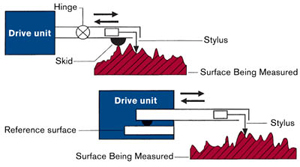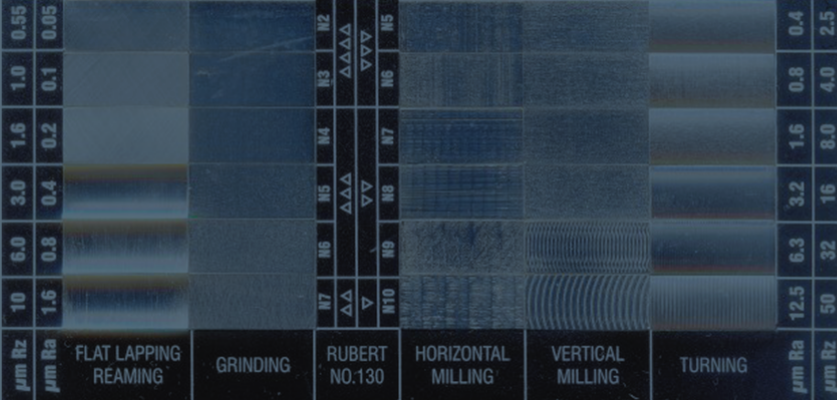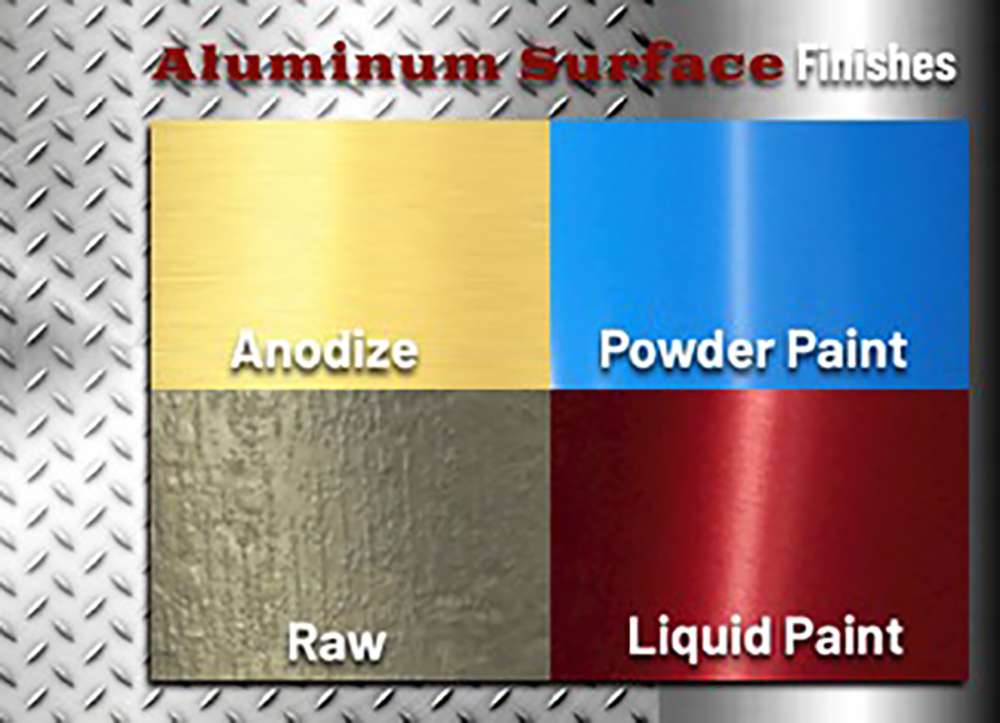Table of Contents
- Improving Surface Finish in Machining: Tips and Techniques
- 1. Choose the Right Tool and Material
- 2. Maintain Proper Cutting Conditions
- 3. Minimize Vibration
- 4. Use High-Quality Coolant
- 5. Consider the Machining Sequence
- 6. Use Proper Machining Techniques
- 7. Consider Post-Machining Operations
- 8. Measure and Verify Surface Finish
- 9. Benefits of Improving Surface Finish
- 10. Surface Finish: A Balance Between Cost and Quality
- Frequently Asked Questions
Machining is a complex process that involves a lot of technicalities. One of the most important aspects of machining is achieving a good surface finish. A good surface finish is not only visually appealing but also has a significant impact on the functionality of the final product. In this article, we will discuss some effective ways to improve surface finish in machining.
If you are involved in the manufacturing industry, you know the importance of surface finish. A good surface finish not only improves the appearance of the product but also has a direct impact on its functionality. However, achieving a good surface finish is not an easy task, and it requires a lot of expertise and precision. In this article, we will explore some practical tips and tricks to improve surface finish in machining.
- Choose the right tool for the job.
- Use high-quality cutting fluids or lubricants.
- Optimize cutting speed and feed rate.
- Reduce vibration by using a rigid setup.
- Ensure the workpiece is properly secured.
- Consider post-machining finishing techniques like polishing or honing.
Improving Surface Finish in Machining: Tips and Techniques
1. Choose the Right Tool and Material
When it comes to machining, the tool and material used are critical factors in achieving the desired surface finish. Selecting the right tool with a sharp edge and a proper radius can help improve the surface finish. Similarly, choosing the right material with the right hardness and machinability can make a significant difference. For instance, using a material with low machinability can result in poor surface finish and tool wear.
To ensure the best results, it is essential to consider the tool and material parameters, such as cutting speed, feed rate, depth of cut, and coolant system. Proper selection and use of the tool and material can help achieve the optimum surface finish and prolong the tool life.
2. Maintain Proper Cutting Conditions
Maintaining proper cutting conditions is crucial to achieving the desired surface finish in machining. The cutting conditions include cutting speed, feed rate, and depth of cut, which can significantly affect the surface finish.
To improve the surface finish, it is essential to maintain the correct cutting conditions. A higher cutting speed can increase the heat generated, resulting in a poor surface finish, while a lower cutting speed can result in tool wear. Similarly, a higher feed rate can produce chatter marks, while a lower feed rate can cause tool wear.
Therefore, it is essential to optimize the cutting conditions, such as using the right cutting speed, feed rate, and depth of cut, to achieve the desired surface finish.
3. Minimize Vibration
Vibration is a common problem in machining that can result in poor surface finish, tool wear, and reduced accuracy. The vibration can occur due to several factors, such as improper tool and material selection, improper cutting conditions, and inadequate machine setup.
To minimize vibration, it is essential to identify the root cause and take corrective measures. Some of the techniques to minimize vibration include using the right tool and material, optimizing the cutting conditions, and maintaining the machine’s stability. Additionally, using vibration-dampening tool holders and anti-vibration inserts can also help reduce vibration and improve the surface finish.
4. Use High-Quality Coolant
Coolant plays a crucial role in machining by reducing the temperature generated during the cutting process, which can affect the surface finish. Using a high-quality coolant can help achieve better surface finish and prolong the tool life.
The coolant should be selected based on the material being machined and the cutting conditions. For instance, water-based coolants are suitable for aluminum, while oil-based coolants are suitable for steel. Additionally, the coolant should be maintained and replaced regularly to ensure its effectiveness.
5. Consider the Machining Sequence
The machining sequence can also affect the surface finish. Machining the critical surfaces first can help achieve the desired surface finish and prevent damage to the machined surfaces during the subsequent machining operations.
Additionally, using climb milling instead of conventional milling can also help improve the surface finish. Climb milling produces less chatter and reduces the tool’s wear, resulting in a better surface finish.
6. Use Proper Machining Techniques
Using the right machining techniques can help improve the surface finish. For instance, using a finishing pass after roughing can help achieve the desired surface finish. Similarly, using a back-and-forth motion instead of a single pass can also help improve the surface finish.
It is also essential to ensure that the tool is properly aligned and that the machine is in good condition. A misaligned tool or a worn-out machine can result in poor surface finish and reduced accuracy.
7. Consider Post-Machining Operations
Post-machining operations can also affect the surface finish. For instance, using abrasive blasting or polishing can help achieve a smoother surface finish. Additionally, using a rust inhibitor can help prevent corrosion and maintain the surface finish.
Therefore, it is essential to consider the post-machining operations and select the appropriate techniques to achieve the desired surface finish.
8. Measure and Verify Surface Finish
Measuring and verifying the surface finish is crucial to ensuring that the desired surface finish has been achieved. Surface roughness testers can be used to measure the surface finish and verify that it meets the required specifications.
Regular monitoring and verification of the surface finish can help identify any issues and take corrective measures to improve the surface finish.
9. Benefits of Improving Surface Finish
Improving the surface finish can have several benefits. It can enhance the appearance of the machined parts, improve their functionality, and reduce the wear and tear of the parts. Additionally, it can also increase the tool life and reduce the machining time, resulting in cost savings.
10. Surface Finish: A Balance Between Cost and Quality
Improving the surface finish can come at a cost, such as increased machining time and tool wear. Therefore, it is essential to find a balance between cost and quality. It is important to consider the surface finish requirements and select the appropriate techniques and parameters to achieve the desired surface finish without compromising on cost and quality.
In conclusion, improving the surface finish in machining requires proper tool and material selection, maintaining the correct cutting conditions, minimizing vibration, using high-quality coolant, considering the machining sequence, using proper machining techniques, and monitoring and verifying the surface finish. By following these tips and techniques, it is possible to achieve the desired surface finish and reap the benefits of improved appearance, functionality, and cost savings.
Frequently Asked Questions
In the machining process, achieving a smooth surface finish is crucial for the quality and functionality of the final product. Here are some common questions and answers regarding how to improve surface finish in machining.
What is surface finish in machining?
Surface finish refers to the texture, roughness, and overall quality of the surface after machining. A smooth surface finish is desirable for many reasons, including improved aesthetics, reduced friction, and increased resistance to wear and corrosion.
To measure surface finish, engineers use a variety of techniques, including profilometers, roughness testers, and visual or tactile inspection.
What factors affect surface finish in machining?
Several factors can affect surface finish in machining, including the type of material being machined, the cutting tool, the machining process, and the cutting parameters. For example, harder materials typically require slower cutting speeds and lighter cuts to achieve a smooth surface finish. Similarly, the choice of cutting tool and machining process can also impact surface finish, as can the feed rate, depth of cut, and coolant used during cutting.
Additionally, the condition of the cutting tool and machine can also affect surface finish. Dull or worn tools can create rough or uneven surfaces, while improperly maintained equipment can cause vibration or chatter during cutting, leading to poor surface finish.
What are some techniques for improving surface finish in machining?
There are several techniques that machinists can use to improve surface finish, including optimizing cutting parameters, using the right cutting tool, and employing appropriate machining processes. For example, reducing the feed rate or depth of cut can help to reduce surface roughness, while using a sharper cutting tool or a more rigid machine can help to create a smoother surface.
Other techniques for improving surface finish include using high-quality coolant during cutting, taking steps to minimize vibration and chatter during machining, and using post-processing techniques such as honing or polishing to achieve an even smoother finish.
What are some common mistakes that can lead to poor surface finish in machining?
One common mistake that can lead to poor surface finish is using the wrong cutting tool or machining process for the material being machined. For example, using a tool designed for soft metals to machine a hard material can result in a rough or uneven surface.
Another mistake is using improper cutting parameters, such as a high feed rate or depth of cut, which can cause excessive tool wear and lead to a poor surface finish. Other mistakes include using a dull cutting tool or failing to properly maintain the machining equipment, which can result in vibration or chatter during cutting and create an uneven surface.
How can machinists ensure consistent surface finish in their work?
To ensure consistent surface finish in their work, machinists should carefully monitor and adjust cutting parameters as needed, using appropriate tools and processes for the material being machined. They should also regularly inspect and maintain their equipment to ensure that it is in good working order and capable of producing high-quality surfaces.
Machinists can also benefit from using advanced software and tools to simulate cutting operations and optimize cutting parameters, helping to ensure that they achieve the desired surface finish with each project. By taking these steps, machinists can produce consistent, high-quality surfaces that meet the needs of their customers and clients.
In conclusion, achieving a better surface finish in machining requires a combination of factors. Firstly, selecting the right tool and materials for the job is essential. Secondly, paying attention to the cutting parameters such as cutting speed, depth of cut, and feed rate can ensure optimal performance. Lastly, proper maintenance of the machine and tooling can significantly improve the surface finish and prolong the life of the equipment.
By implementing these measures, machinists can produce high-quality parts with improved surface finish, reducing the need for additional finishing processes and ultimately saving time and money. Additionally, a better surface finish can enhance the functionality and aesthetics of the machined part, making it more desirable to customers.
In summary, improving surface finish in machining is a crucial aspect of the manufacturing process. By following these tips and best practices, machinists can achieve superior results and deliver exceptional products to their customers.
Request a quote today!
[contact-form-7 id="1578" title="Contact form"]
Please compress the file into a ZIP or RAR file before uploading. Alternatively, send through your RFQ by email.
enquires@unitymanufacture.com





